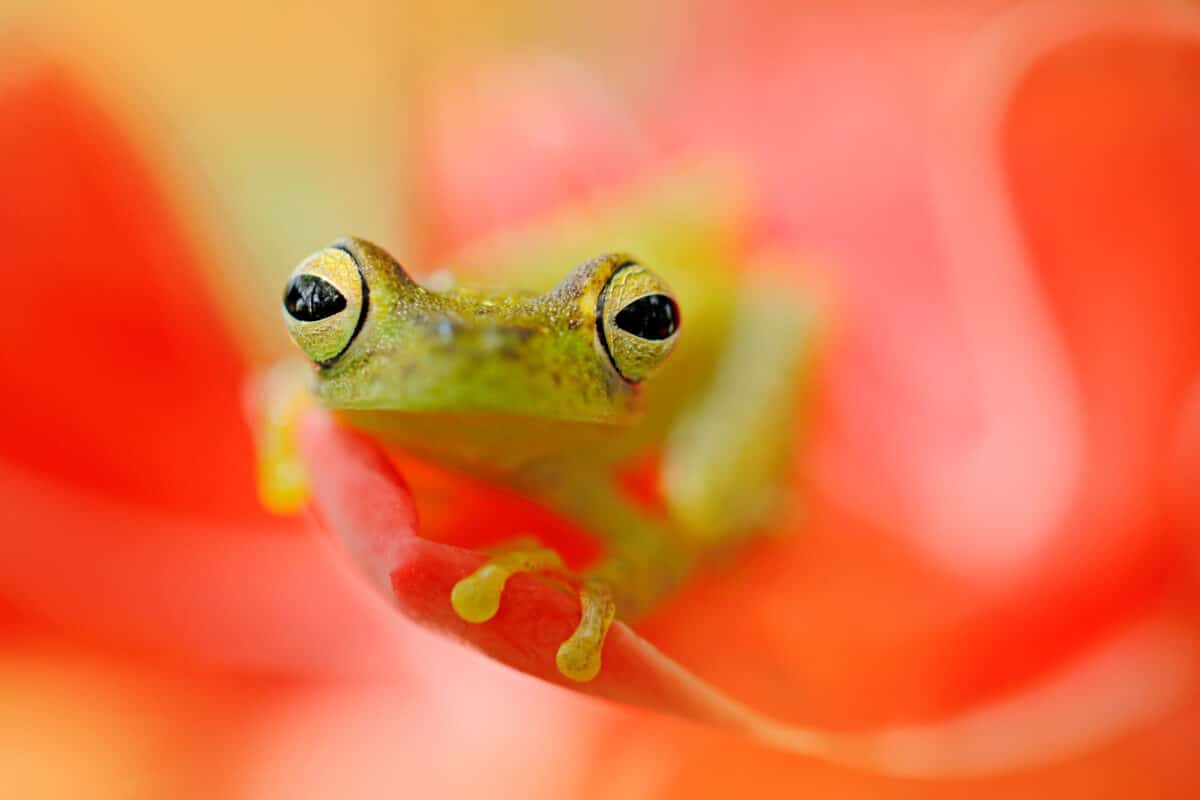Glass frogs are one of nature’s most captivating creatures, with their unique transparency earning them the nickname “the jewels of the rainforest.” Found mainly in Central and South America, these amphibians have fascinated biologists and nature enthusiasts alike. This article delves into their intriguing anatomy, behaviors, and ecological importance.
Origins and Habitat

The majority of glass frog species reside in tropical rainforests from Southern Mexico down to Ecuador. They are typically found at elevations between 300 to 2,500 meters above sea level. This environment provides them with abundant vegetation and moisture, making it an ideal habitat. The lush forest canopy offers protection and a plentiful supply of insects for food.
Unveiling the Unseen: The Glass Frog’s Transparency
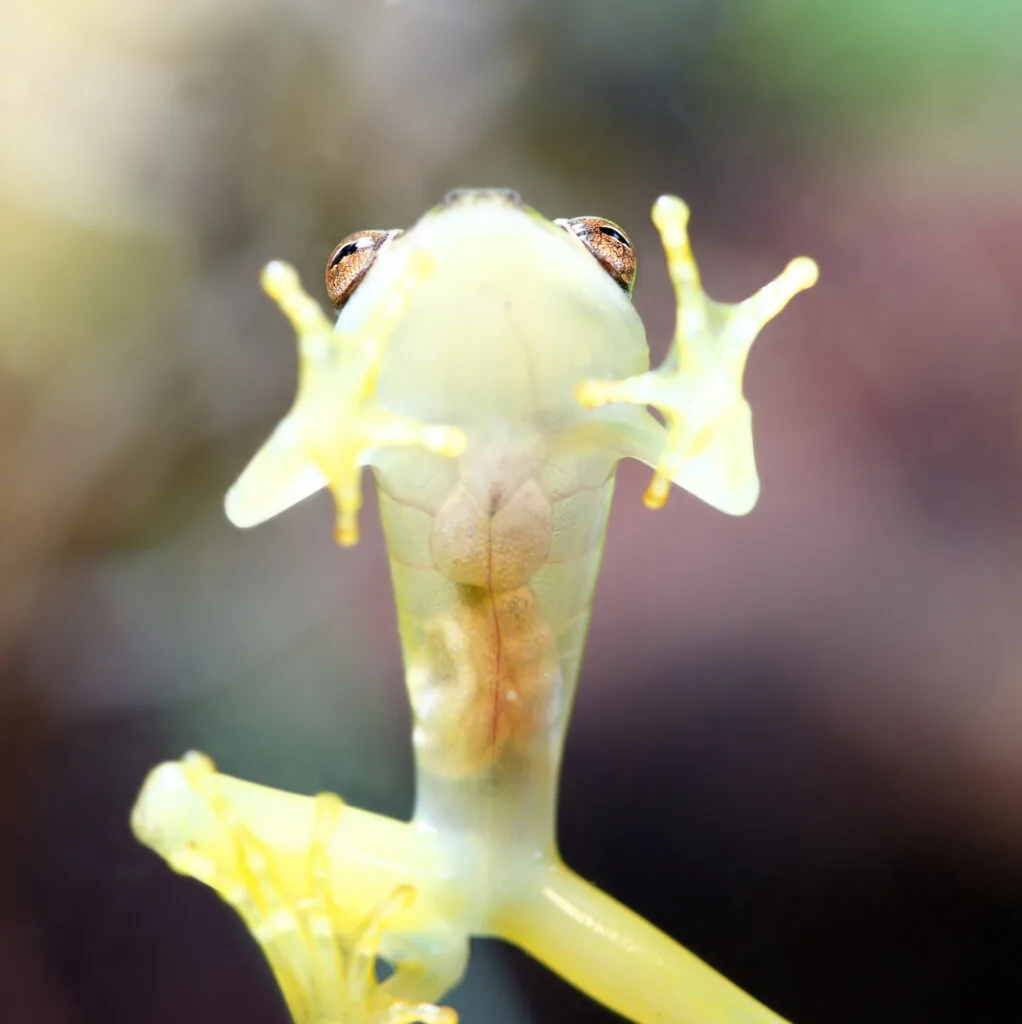
The most striking feature of the glass frog is its transparent skin on the belly, allowing observers to view its internal organs, such as the heart, liver, and digestive tract. This remarkable feature is not just a curiosity—it plays a crucial role in camouflage. This transparency allows them to blend effortlessly with the surrounding foliage while resting on leaves or branches.
Diverse Species, Unique Traits

There are over 150 species of glass frogs, each with its own unique characteristics. Some species, like the Reticulated Glass Frog, have intricate patterns and brighter colors, adding to their allure. Others, such as the Fleischmann’s Glass Frog, display striking green hues that help them blend with leaves. Such diversity showcases the adaptability and evolutionary specialization of these frogs.
Behavior and Nocturnal Habits

Glass frogs are primarily nocturnal, coming to life under the cover of darkness. During the night, males call out to attract females with distinctive vocalizations. These calls play a vital role in mating and establishing territories. Their nocturnal habits are advantageous for avoiding diurnal predators.
Courtship and Reproduction
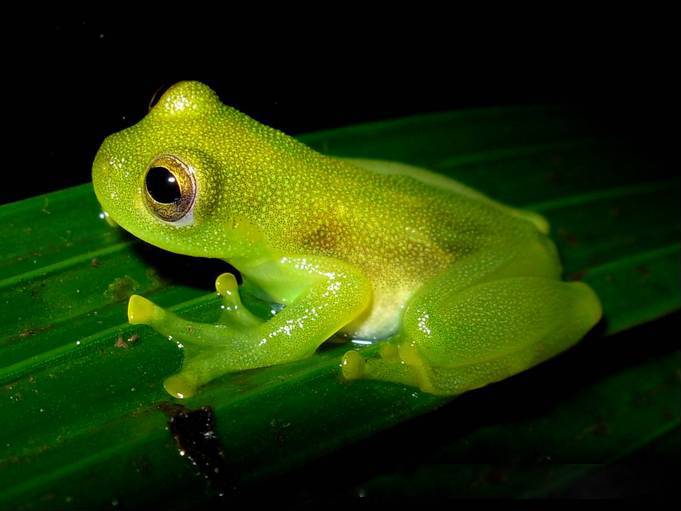
During the breeding season, males guard chosen territories on leaves overhanging streams. They defend these areas from rivals to ensure mating success. Once a female arrives, the male embraces her in a process known as amplexus, where she lays eggs that he fertilizes externally. The male then guards the clutch until the eggs hatch, ensuring their safety from potential predators.
Females Choosing the Perfect Leaf

Females are highly selective when choosing where to lay their eggs. The placement is crucial as it influences the survival rate of the offspring. Typically, eggs are laid on the undersides of leaves, providing shelter from direct sunlight and predators. The proximity to water is also essential for the eventual hatching of tadpoles, who drop into the stream below upon emergence.
Guardians of the Offspring
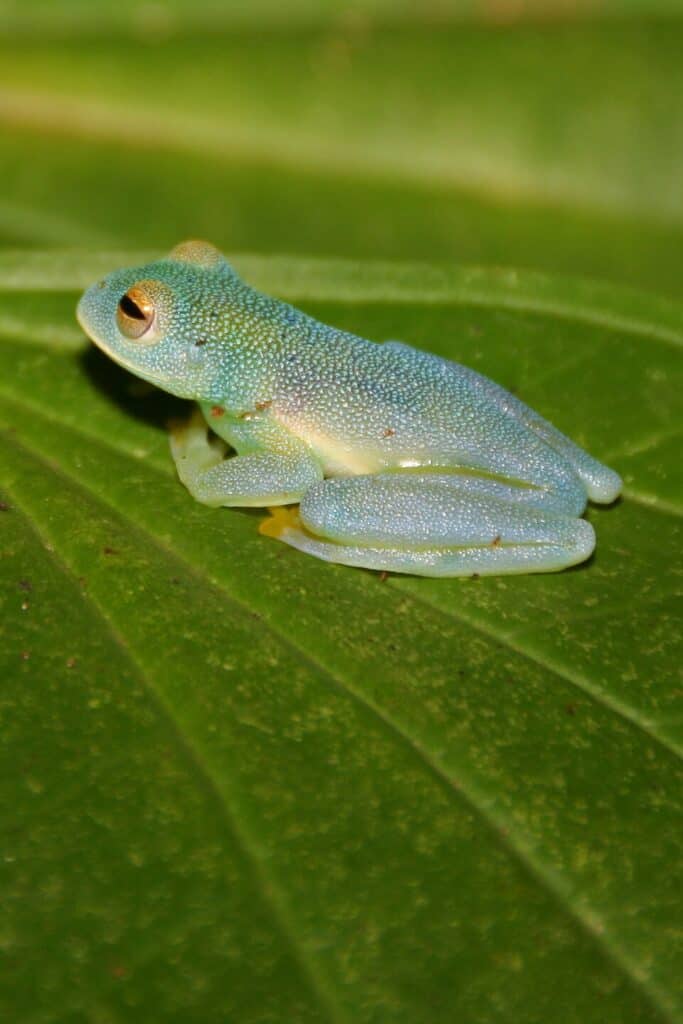
Males exhibit remarkable parental care, watching over eggs vigilantly and keeping them moist until hatching. This guarding behavior is a fascinating aspect of their life cycle, as it markedly increases the chances of offspring survival in the wild. It also illustrates a significant level of parental investment uncommon among many amphibian species.
Peculiar Predators and Defense Mechanisms
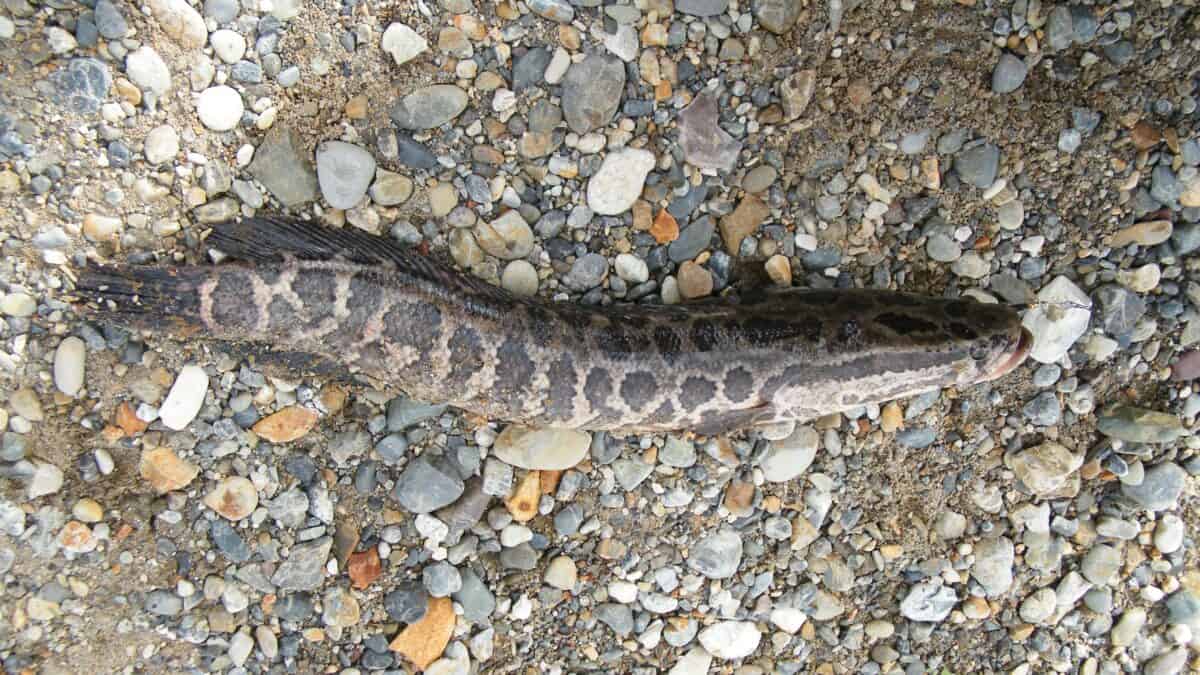
Glass frogs face many threats from predators, including snakes, birds, and larger insects. Their transparent bodies serve as a crucial defense mechanism, aiding in their ability to go unnoticed in their environment. Additionally, their nocturnal behavior reduces the risk of encounters with predators active during the day.
Conservation Status and Challenges
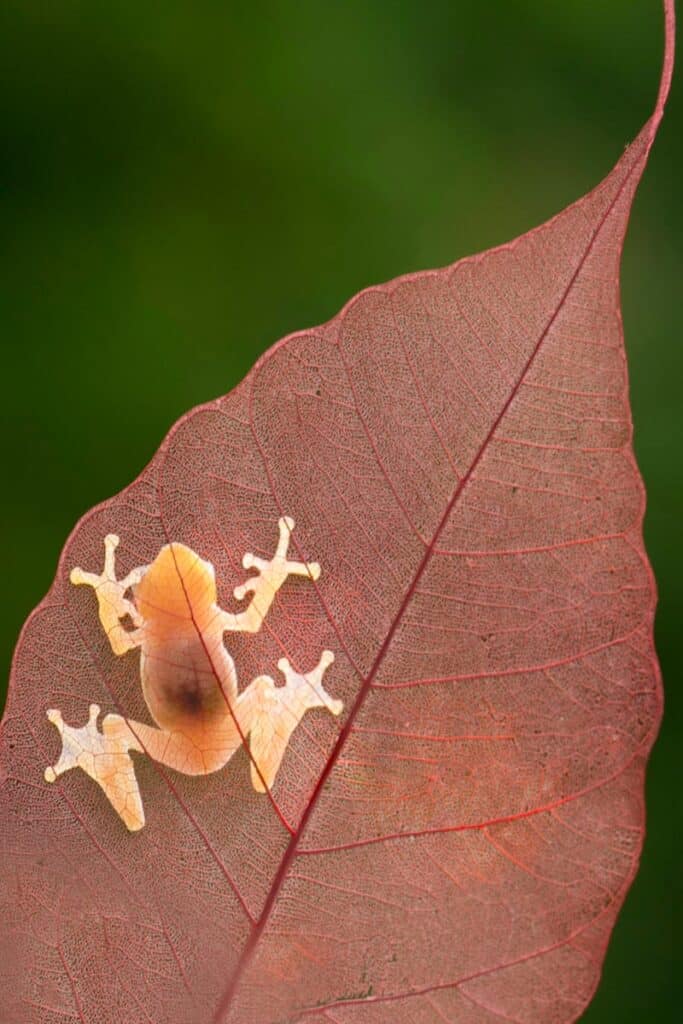
Many glass frog species are currently not endangered, but some like the Cochranella mache experience threats from habitat loss and pollution. Conservation efforts focus on preserving their rainforest habitats and addressing environmental issues impacting these areas. Protecting these delicate ecosystems is vital for the continued survival of glass frogs.
The Role of Glass Frogs in Ecosystems

As insectivores, glass frogs play a crucial role in controlling insect populations, contributing to the balance of their ecosystems. Their presence indicates a healthy habitat, and their loss could signal broader environmental issues. Therefore, glass frogs are often considered vital indicators of ecosystem health.
Captivating Aesthetics and Intrigues Among Scientists
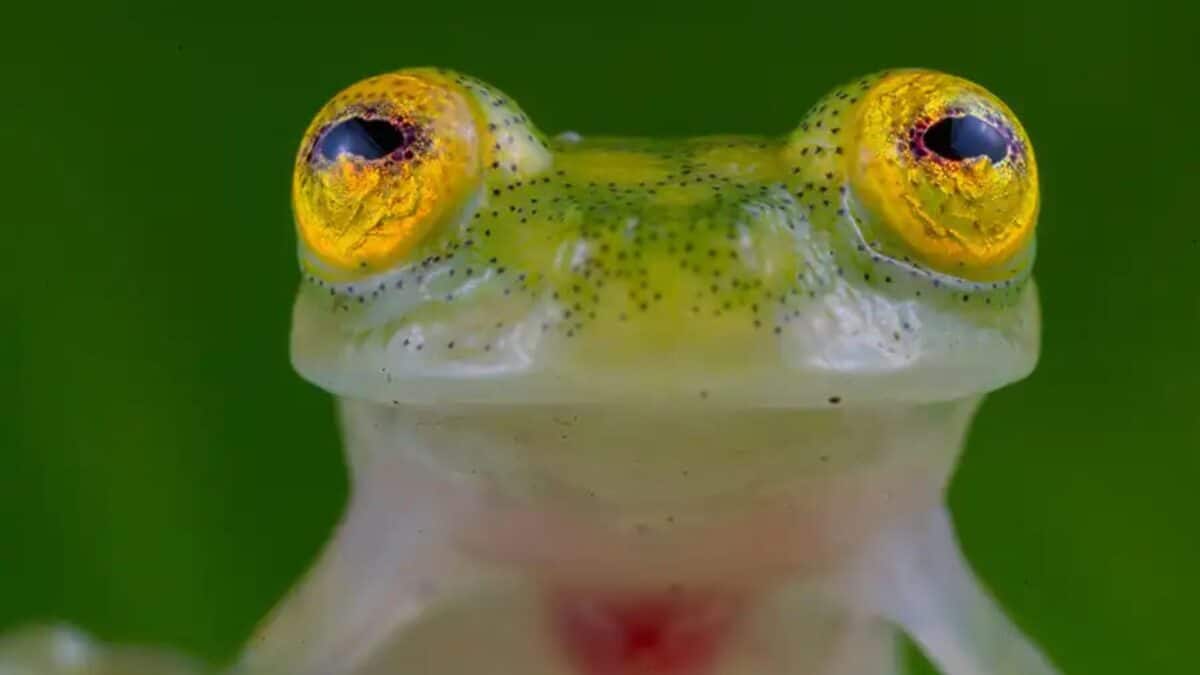
Glass frogs’ extraordinary beauty and biological distinctiveness have made them subjects of interest and intrigue among scientists and nature lovers alike. Their transparent organs not only provide valuable insight into amphibian biology but also inspire advances in various scientific fields, from biomimicry to medical research.
The Future of Glass Frogs
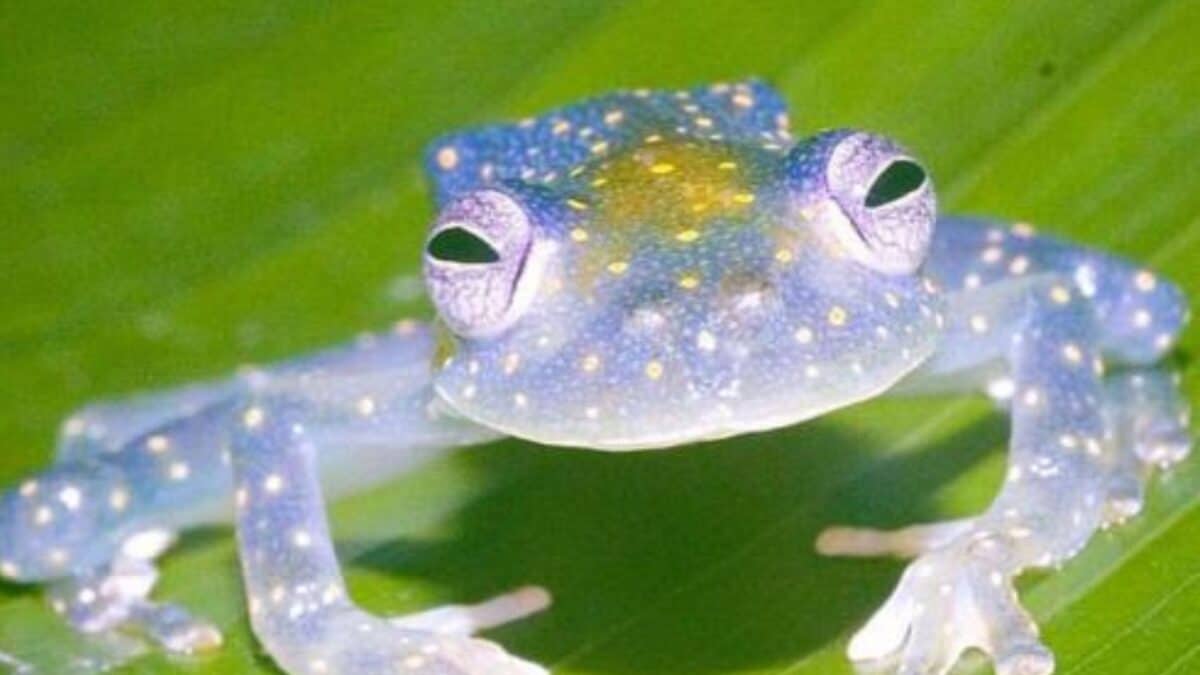
The future of these mesmerizing creatures relies heavily on ongoing conservation efforts and increased awareness of their ecological importance. As the world becomes more environmentally conscious, glass frogs serve as ambassadors for the conservation of tropical rainforests. Efforts to protect these amphibians also aid countless other species residing in their habitats.
Glass frogs are indeed a testament to nature’s marvel and the intricate balances within ecosystems. Their transparency not only represents a fascinating biological adaptation but also highlights the beauty found within the natural world. By understanding and protecting these unique creatures, we can make strides in preserving biodiversity and sustaining the health of our planet’s ecosystems. As citizens of the world, an appreciation and commitment to their conservation can ensure these translucent treasures continue to thrive.
- America’s Most Endangered Mammals And How to Help - August 9, 2025
- The Coldest Town in America—And How People Survive There - August 9, 2025
- How Some Birds “Steal” Parenting Duties From Others - August 9, 2025

